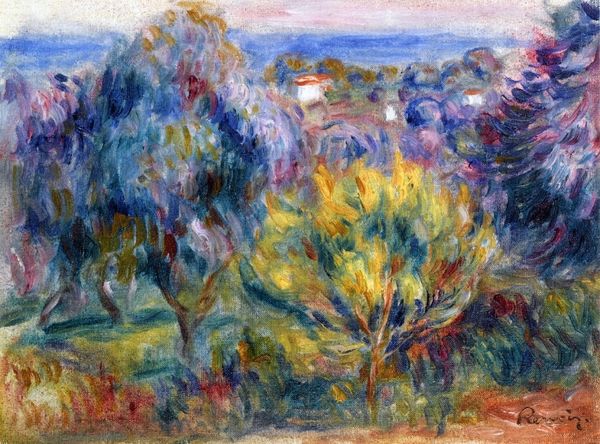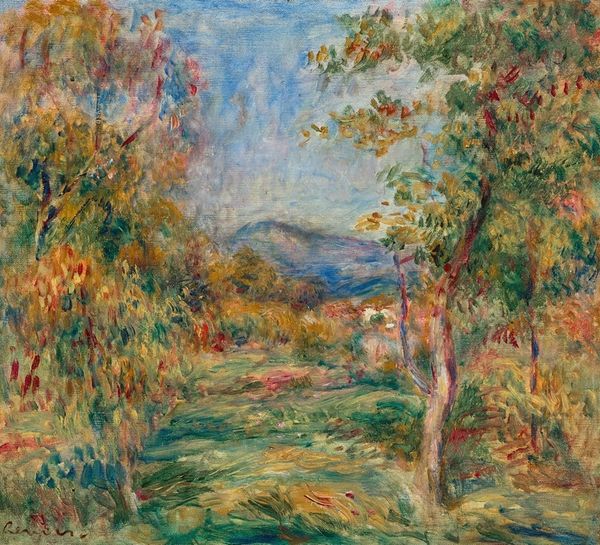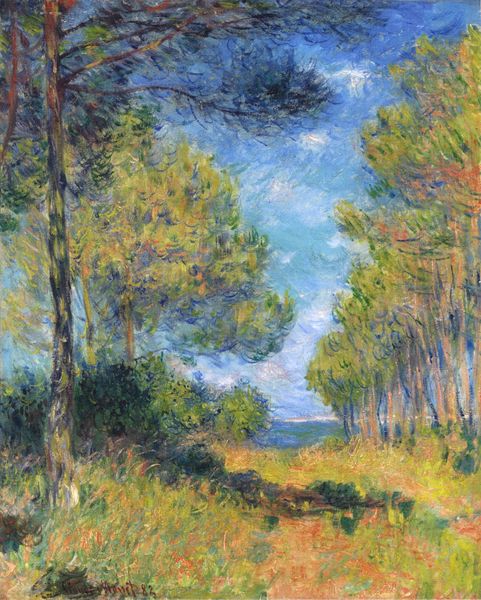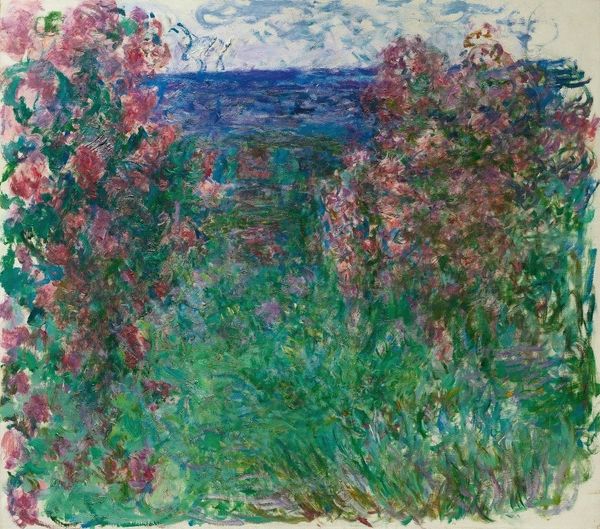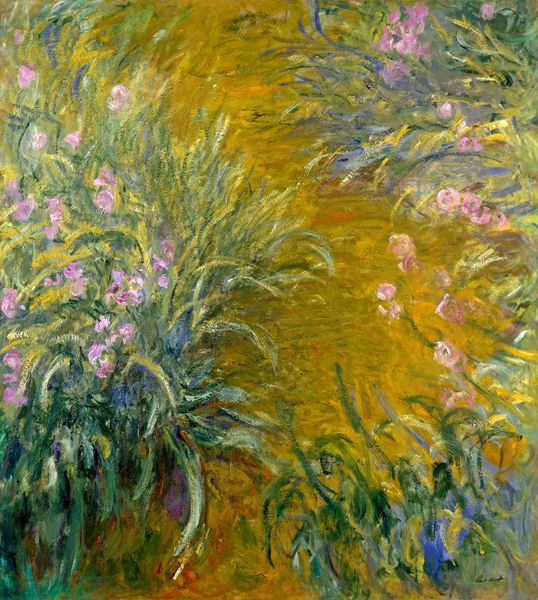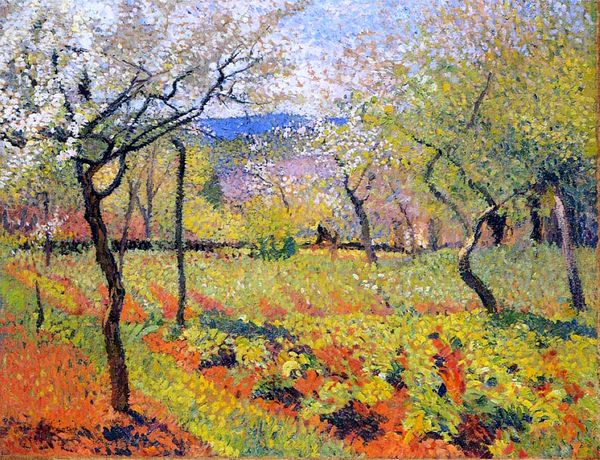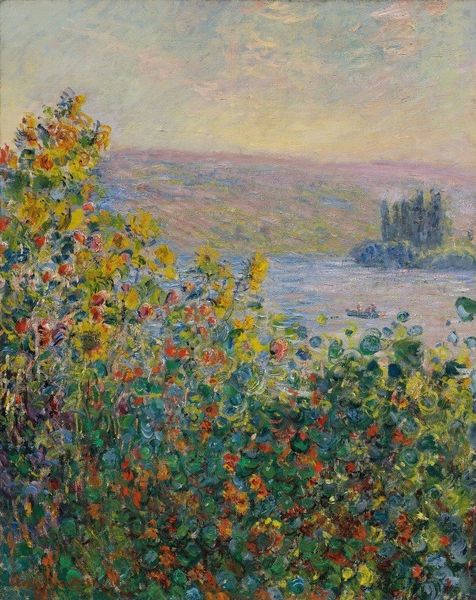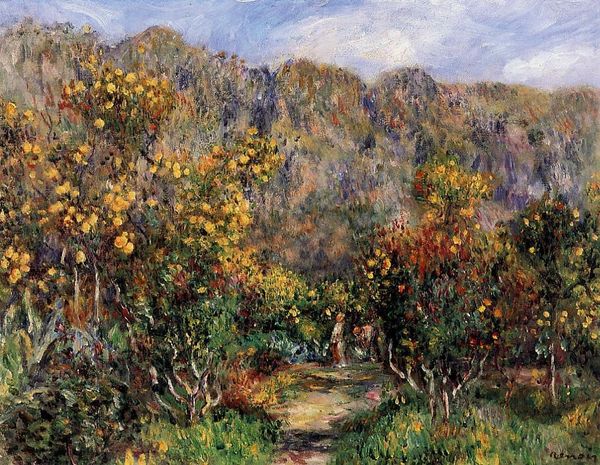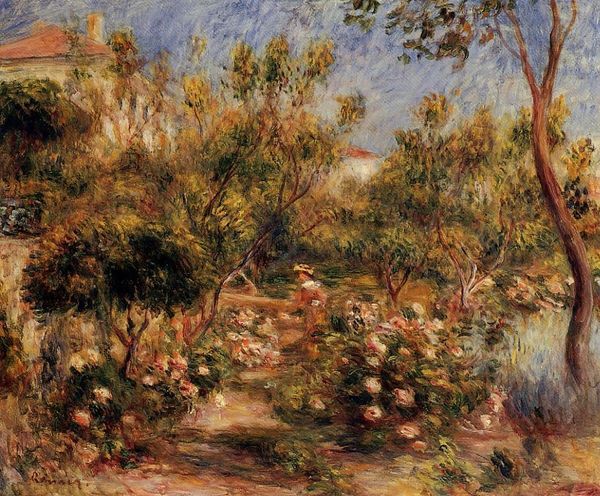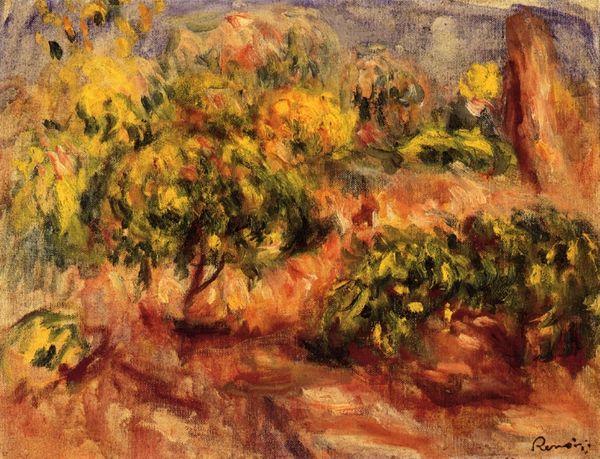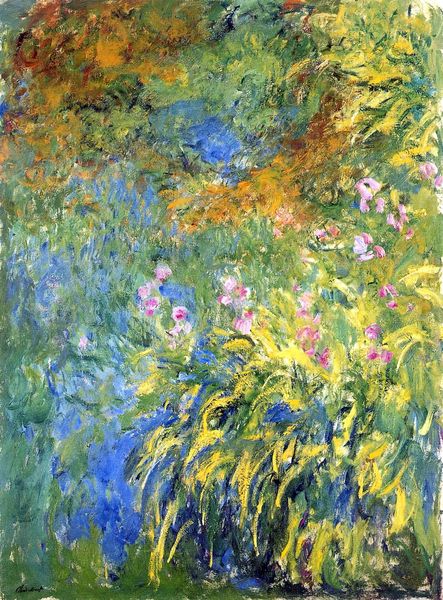
Dimensions: 59 x 72 cm
Copyright: Public domain
Editor: So, here we have Claude Monet's "The House Among the Roses," painted in 1925. It’s oil on canvas, and looking at it, I'm immediately struck by how vibrant and almost chaotic the colors are. What do you see in this piece? Art Historian: The late Monet, especially these garden scenes, speaks volumes about privilege and artistic freedom, wouldn't you agree? Consider the sociopolitical context of 1925. While many grappled with post-war realities and burgeoning social movements, Monet was in Giverny, consumed with his garden. Editor: I never really thought about that before, it’s a good point. But even if the subject matter feels somewhat detached, there’s still something compelling about it, right? Art Historian: Absolutely. But its allure exists within a framework of class and access. These aren’t just pretty flowers; they are a carefully constructed environment, sustained by wealth. Monet had the means to cultivate this vision, and that act of cultivation is inherently political. Editor: So you're saying the painting isn’t just about the beauty of the roses, but about the system that allowed their beauty to be captured in the first place? Art Historian: Precisely. It prompts us to question the artist’s position within a society marked by disparity. How do the artist's circumstances shape the creation and reception of their work? Look closer. Are those roses truly untamed, or have they been pruned and cultivated to meet a particular aesthetic ideal? Is there room for any wildflowers? Editor: I see what you mean. Viewing it this way, it does open up a lot of questions about art, class, and even what we consider "natural". Art Historian: Art isn't created in a vacuum, and by interrogating the conditions of its production, we engage in a critical dialogue with the artist, the artwork, and ourselves. Thanks for your stimulating questions today.
Comments
No comments
Be the first to comment and join the conversation on the ultimate creative platform.
